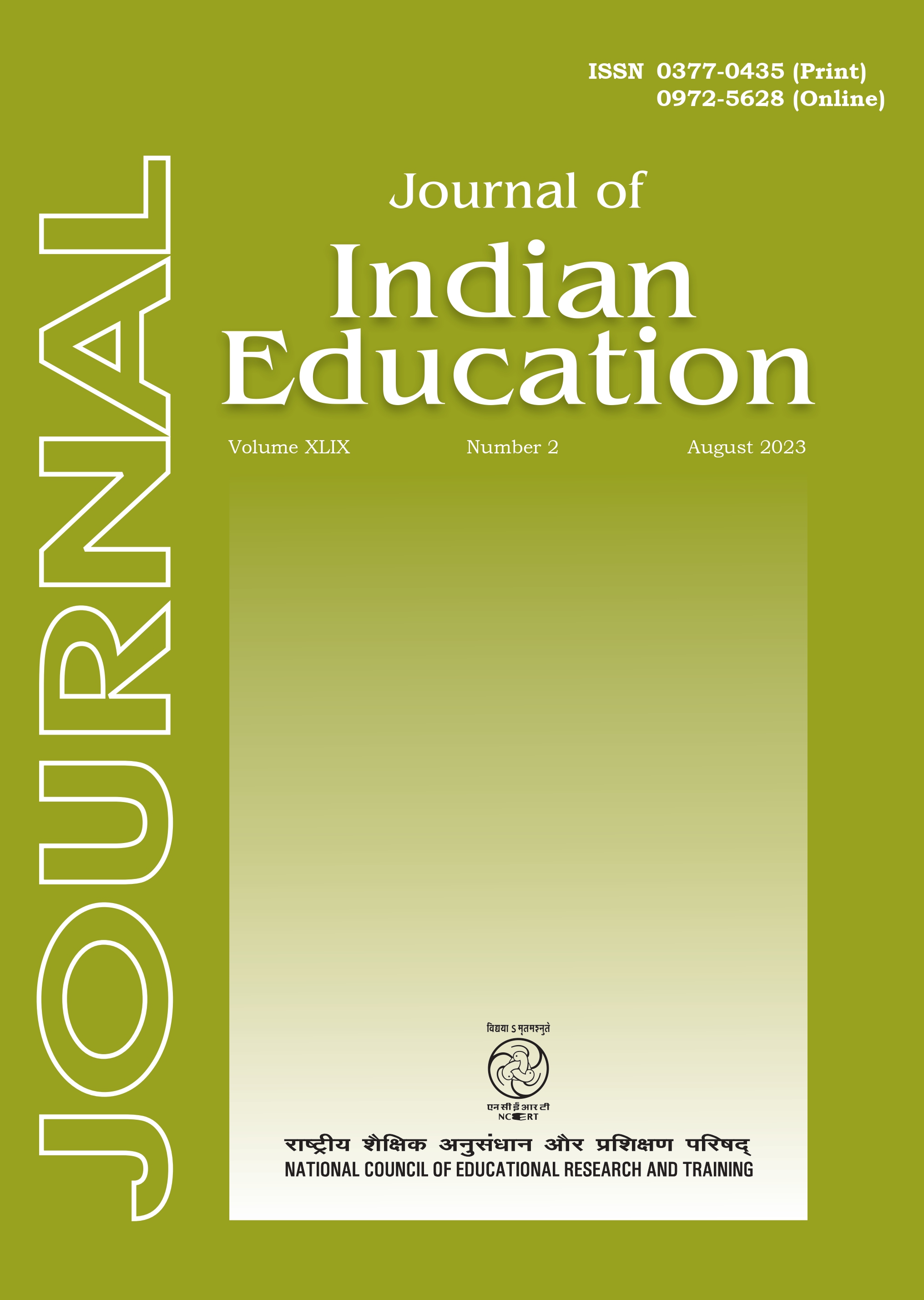Published 2023-08-31
Keywords
- Performance Indicators for Elementary School Teachers,
- Justice Verma Commission,
- National Policy on Education,
- coherent system of teacher appraisal systems,
- NCERT
How to Cite
Abstract
Teachers play a crucial role in the educational process. Various studies have proven their impact on ensuring quality education and more specifically, students’ learning outcomes. The various issues and challenges in preparing and sustaining the quality of teachers through appropriate teacher preparation programmes have been a much discussed area in research and policy documents. Ensuring and sustaining a quality teacher requires a mechanism to reflect, assess and improve the teacher’s performance. In this regard, the National Policy on Education 1986 (NPE) highlighted the need for a data-based, open, transparent and participatory teacher appraisal system as a part of the professional development programme for teachers. Justice Verma Commission (JVC) report (2012) recommended the need for the development of a coherent system of teacher appraisal systems. Based on the recommendation of the Justice Verma Commission, the Government of India entrusted the National Council of Educational Research and Training (NCERT) to develop a tool for assessing the performance of teachers. Accordingly, in the year 2013, NCERT developed a tool titled Performance Indicators for Elementary School Teachers (PINDICS). Later on, to cater to the needs of teachers working at various stages of school education as well as subjects, the council further developed a tool namely Teacher’s Self-Assessment Rubrics (TSAR) for the use of teachers working at different levels. How to use TSAR for teachers as a self-assessment tool is the major discussion point in this paper. Once the teacher submits the self-assessment report, how the other senior officers, such as Principal/Head Teacher, CRCC, BRCC, etc., can be used the same for the purpose of the improvement of school education in general, and student learning in particular has also been narrated through appropriate examples. Specifically, the paper describes the ways in which assessments of teacher performance using TSAR can help in reflecting on the teaching learning process as well as a means for the organisation of a continuing professional development programme for teachers.

